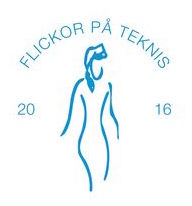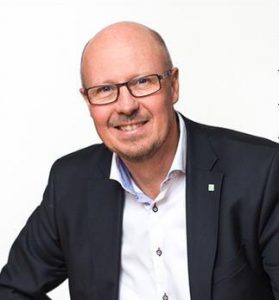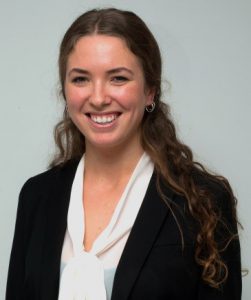Swedish trailblazer project has recruited women to tech university for 30 years
Due to a growing demand for engineers in Sweden in the mid-eighties, Lund University started a recruiting project in 1984 to attract more women to technical educations. Today, 30 years later, the project Flickor på Teknis (‘Girls in Tech’) is still running and with great success.
The theme of Crastina in May 2016 is “Working for equality together” (with a focus on gender equality).
 Flickor på Teknis is a project run by the Faculty of Engineering at Lund University, Sweden (swe. Lunds Tekniska Högskola or LTH). The purpose is to inspire more women to apply for technical educations.
Flickor på Teknis is a project run by the Faculty of Engineering at Lund University, Sweden (swe. Lunds Tekniska Högskola or LTH). The purpose is to inspire more women to apply for technical educations.
Last year was the 30th anniversary of the project and it has been reviewed as highly successful. Each year approximately 120 girls from high schools (swe. gymnasium) around the country visits Lund University for a couple of days. During their stay they get to explore what studies at a technical university contains, experiencing everything from lectures and laboratory experiments to dinner parties. Evaluating the project, it was found that 20% of the girls who attend the event later enter one of the technical programs at the university.
Crastina got in touch with Tomas Ringdahl, regional director of Akademiska Hus. He is a former student at LTH and took part in launching the project ‘Flickor på Teknis’ in 1984-1985.

Hi Tomas! What is the purpose of the project Flickor på Teknis?
The purpose of the project is to increase the number of female students at our technical universities. Flickor på Teknis gives young women the chance to explore Lund University and the Faculty of Engineering on there own, rather than relay solely on other people’s experiences and judgements.
What gave rise to the idea of the project?
Sweden had an urgent need for engineers back in 1985; in order to assure that Sweden maintained a strong competitor on the market there was a great demand for competence within the technological sector. Realizing that it wasn’t feasible to disregard the potential talent and competence among 50% of the population, Lund University put an investigator in place to evaluate how the university was working with questions regarding equality. The investigator, Ingegärd Göransson, assembled a team in which I participated as a student representative. It felt natural to me to make the most of the responsibility I had been given by doing something that had a clear impact on the situation and that would improve gender equality.
[pullquote align=”left” cite=”Tomas Ringdahl” link=”” color=”red” class=”” size=””]“It is absolutely necessary to include the whole population when we are recruiting next generation’s engineers.”[/pullquote]
Do you believe that the underlying reasons for the disproportion of women at technical educations are the same now as they were back in 1984 when the project was launched?
Yes, I do. I believe we are facing the same challenges now, even though a lot has improved since then. There are other tracks available among our technical educational programmes today, many of which are attracting women to a greater extent than the traditional programmes. Industrial design and medical technology are good examples of these.
Why is it important to recruit more women into STEM?
Sweden needs outstanding engineers in order to remain as one of the words leading nations. Knowledge and competence are critical to maintain the power to compete on an international market, and it is therefore absolutely necessary to include the whole population when we are recruiting next generation’s engineers. This is essential in a future society.
 We also had a chat with Maria Aurell who is studying Industrial engineering and management at LTH. She is currently part of the project group which organizes Flickor på Teknis.
We also had a chat with Maria Aurell who is studying Industrial engineering and management at LTH. She is currently part of the project group which organizes Flickor på Teknis.
Hi Maria, what is the purpose of the project Flickor på Teknis?
The purpose is to get more female high school students to apply for technical universities.
Why is it important to get more women into STEM?
The world consists of 50 % women and 50 % men, which makes it quite obvious for me that the working life should look the same. Especially technology and science has a big impact on the world, and therefore everyone should have a chance to contribute, regardless of gender.
[pullquote align=”right” cite=”Maria Aurell” link=”” color=”red” class=”” size=””]“I loved the friendly atmosphere at LTH and during the three days I spent there I decided that I definitely wanted to be a part of it in the future.”[/pullquote]
What are the underlying factors that are giving rise to the disproportion of women at technical educations today?
I think it starts early in school. Girls don’t get the same space to develop their interest for science. It has always been the norm that science is for men, and I think it is going to take a lot of work to change it.
What needs to be changed in order to get more women into these educational programs? Which are the greatest challenges?
The schools need to do a lot more. They need to inspire the female students and lower the obstacles for further studies.
You participated yourself at one of the events hosted by Flickor på Teknis as a high school student. What made you apply for LTH after that?
I participated at Flickor på Teknis during my second year of high school. It made me realise that studying at a technical university wasn’t all that scary. I loved the friendly atmosphere at LTH and during the three days I spent there I decided that I definitely wanted to be a part of it in the future. I’m still convinced it was a great choice!




Leave a Reply
Want to join the discussion?Feel free to contribute!